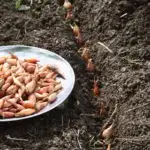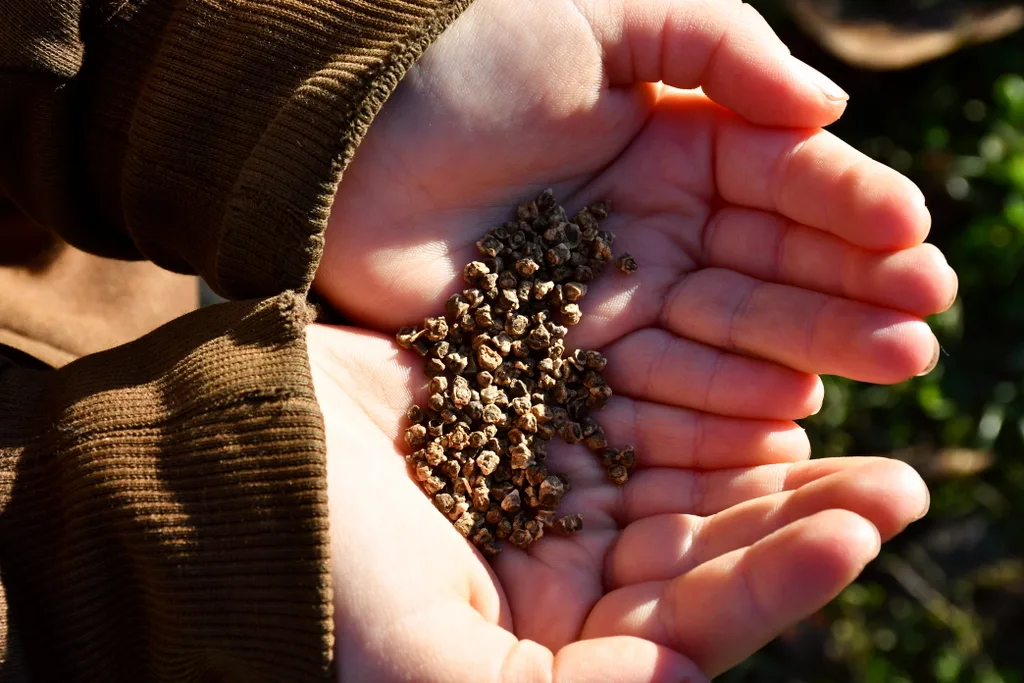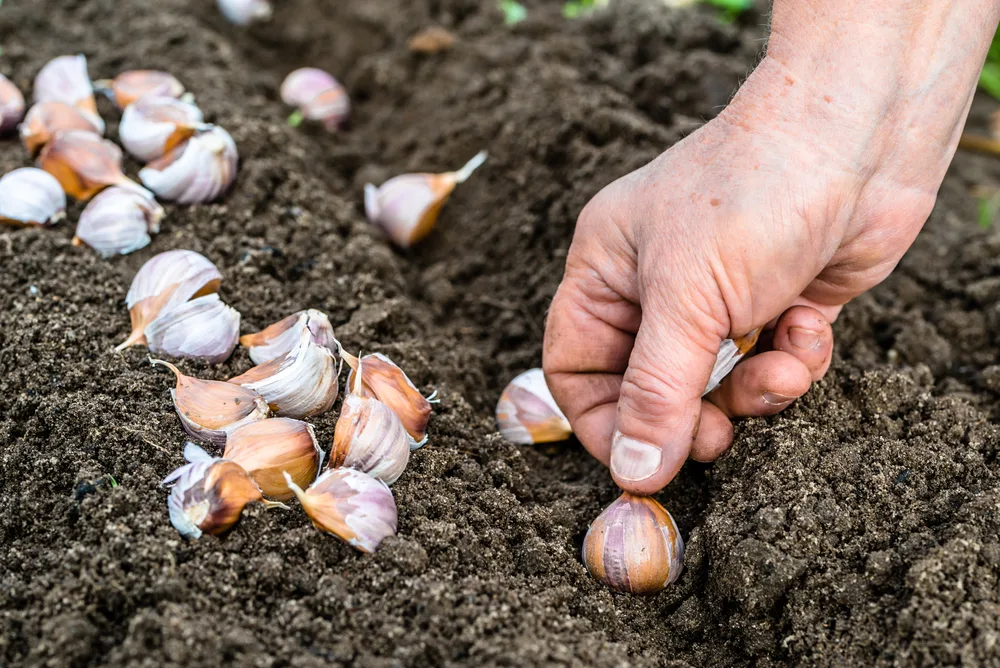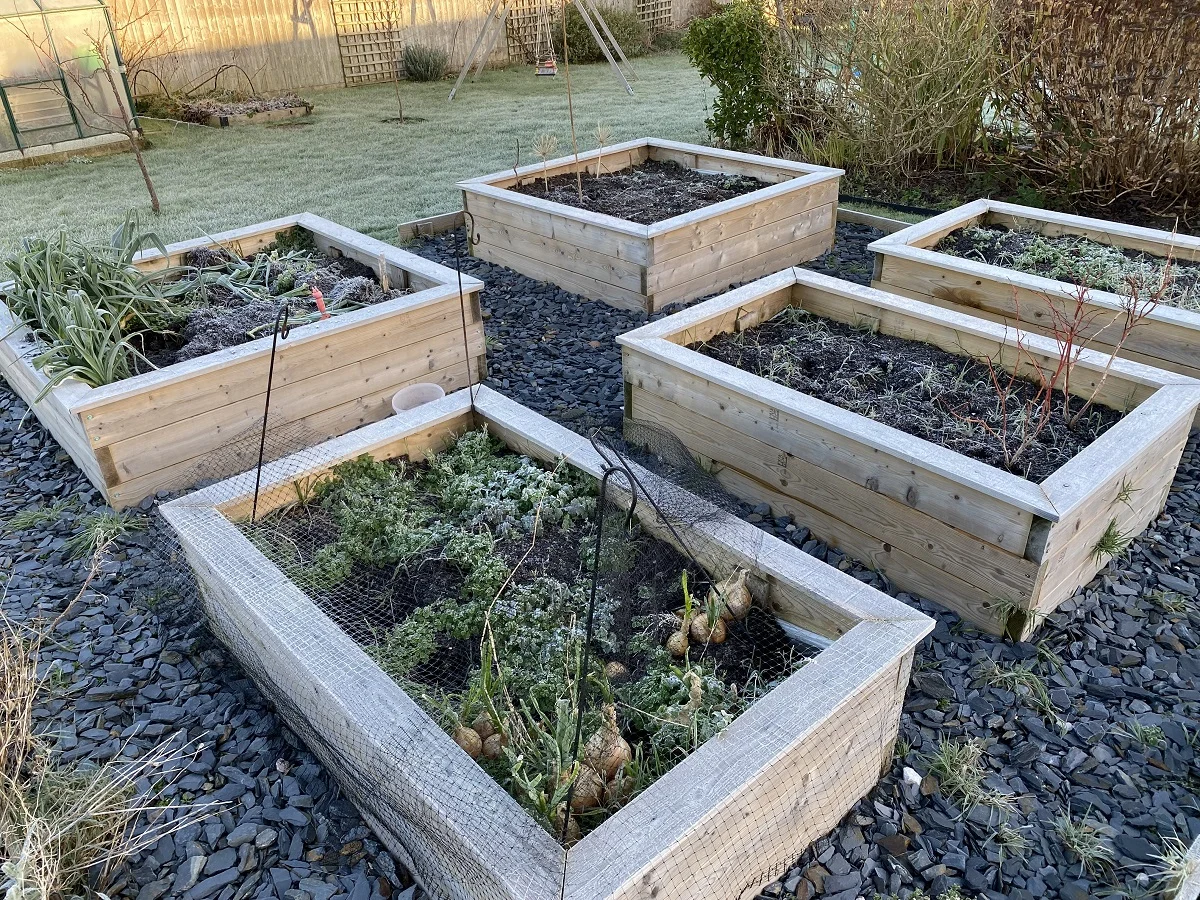
Some years it feels like fall comes and goes with a few blinks of the eye. One week there are green leaves on the trees, then, unexpectedly, cold nights come, color bursts forth and then the show is over.
It may be autumn, but it’s not too late to plant a few more things in your garden.
Not for harvesting this year, for the next one. So, when you’re harvesting the last veggies in your garden beds, it’s time to plant onions, garlic and carrots. While you are at it, you may want to dig up your horseradish and transplant it while the soil is still moist from fall rains.
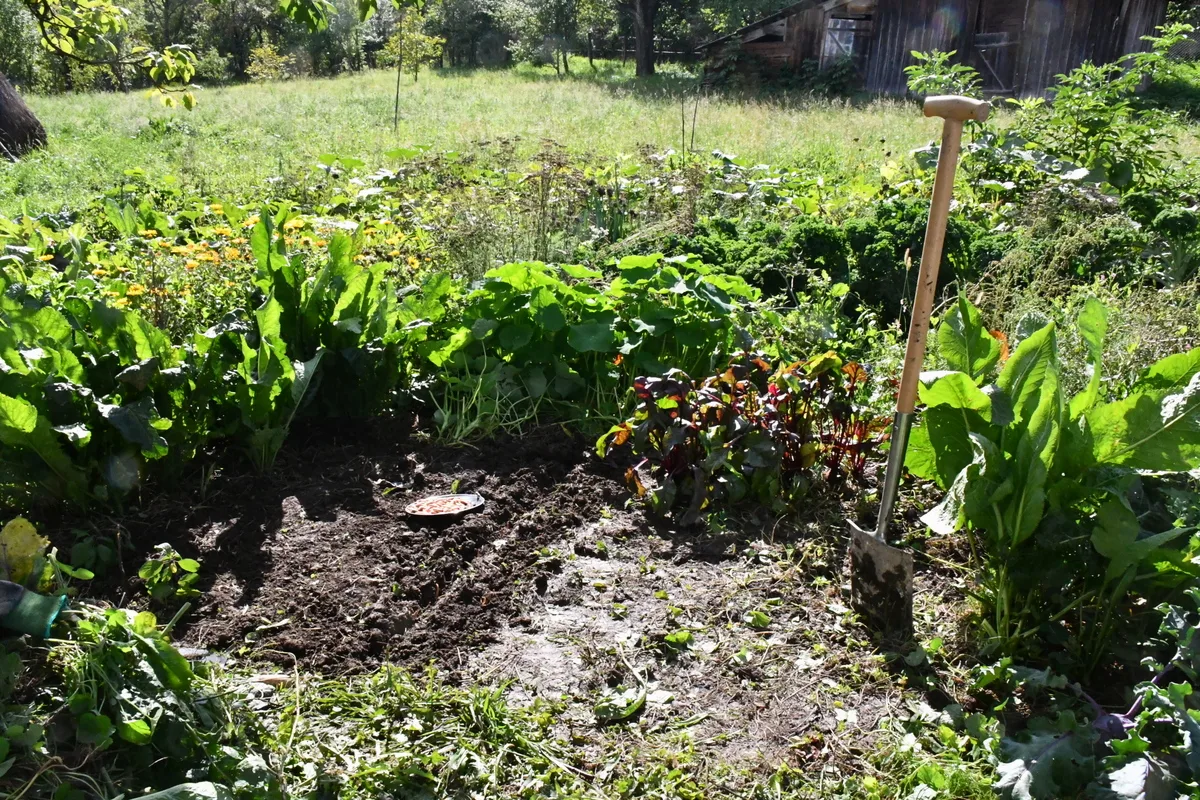
Reasons To Fall Plant Your Onion Crop
Most commonly, gardeners plant onion seeds or sets in the soil, just as soon as the ground can be worked in late March or April. That’s the norm.
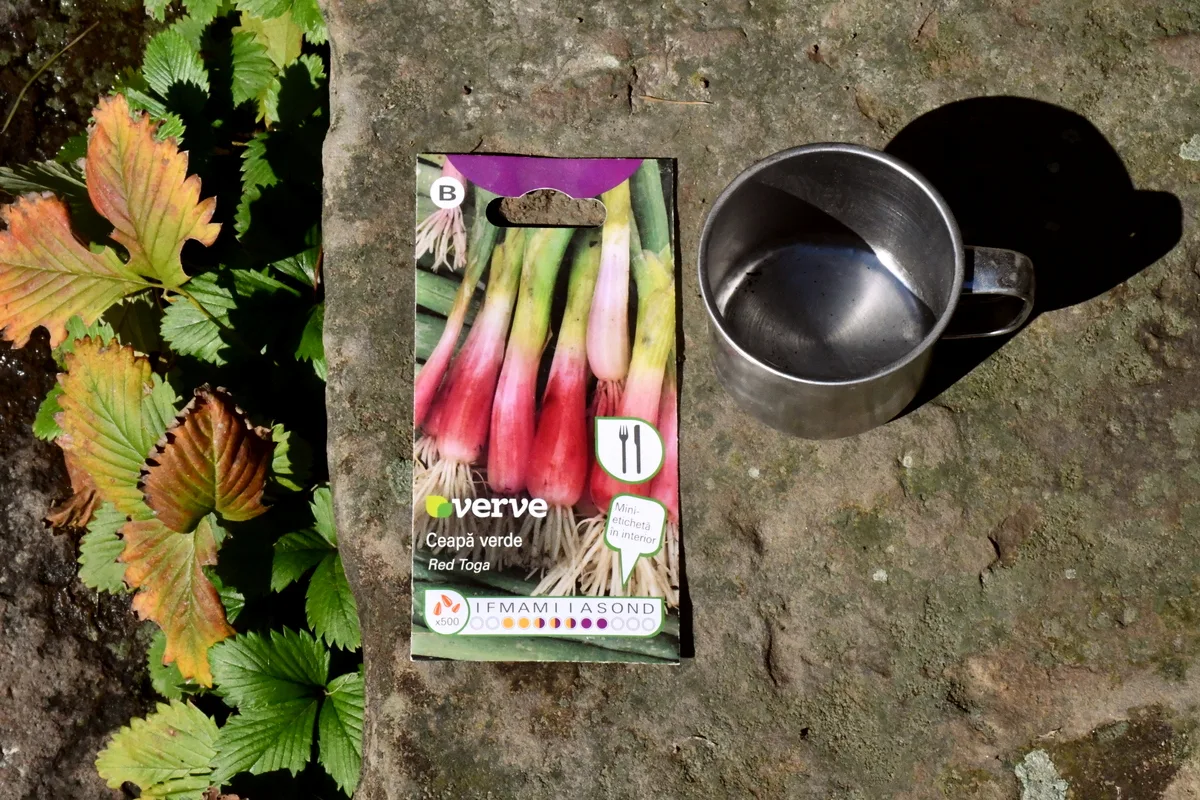
Notice the colored leaves on the wild strawberries? Yep, it’s late September. Planting time.
However, we don’t all garden in the same climate. In some states onions can be grown year-round, such as the central coast of California.
To make the growing of onions even more confusing, it’s definitely possible to plant onion sets in fall and allow them to overwinter under a layer of mulch. This way you can harvest mature onions in spring to early summer.
And that’s exactly what we’ve done this year, fall planted our onions – pictures will follow below.
In short, here’s why you should be fall planting a bunch of onions:
Warmer soil = faster growth.
Both onion sets and onion seeds can germinate and establish their roots quicker in already warmed soil.
Strong roots.
Onions grow much like garlic – when fall planted, they set their roots deeper, go dormant over the winter months, then come back to vigorous life with warmer weather.
Bigger onions.
It almost goes without saying that more established plants have a big advantage when higher temperatures roll around. Instead of focusing energy on growing roots, all they have to do is gain weight and girth. Which makes for a lovely, full-bodied onion.
Flavor.
I’ll let you be the judge of this, but some gardeners, including ourselves, find that fall planted onions have a superior flavor.
Fall planted onions mature earlier.
With several months head start, some fall planted onions can be harvested in June of the following year. Combine that with spring planting and you’ve got yourself a good onion succession coming on, harvesting all summer long.
If you haven’t tried the fall method of planting onion sets yet, it’s definitely worth a go, just about any sort of weather considered.
But, in order to be successful, you have to know the difference between onions.
Finding the Best Onions For Your Location
While most onions will work for fall planting, not every bulb will thrive.
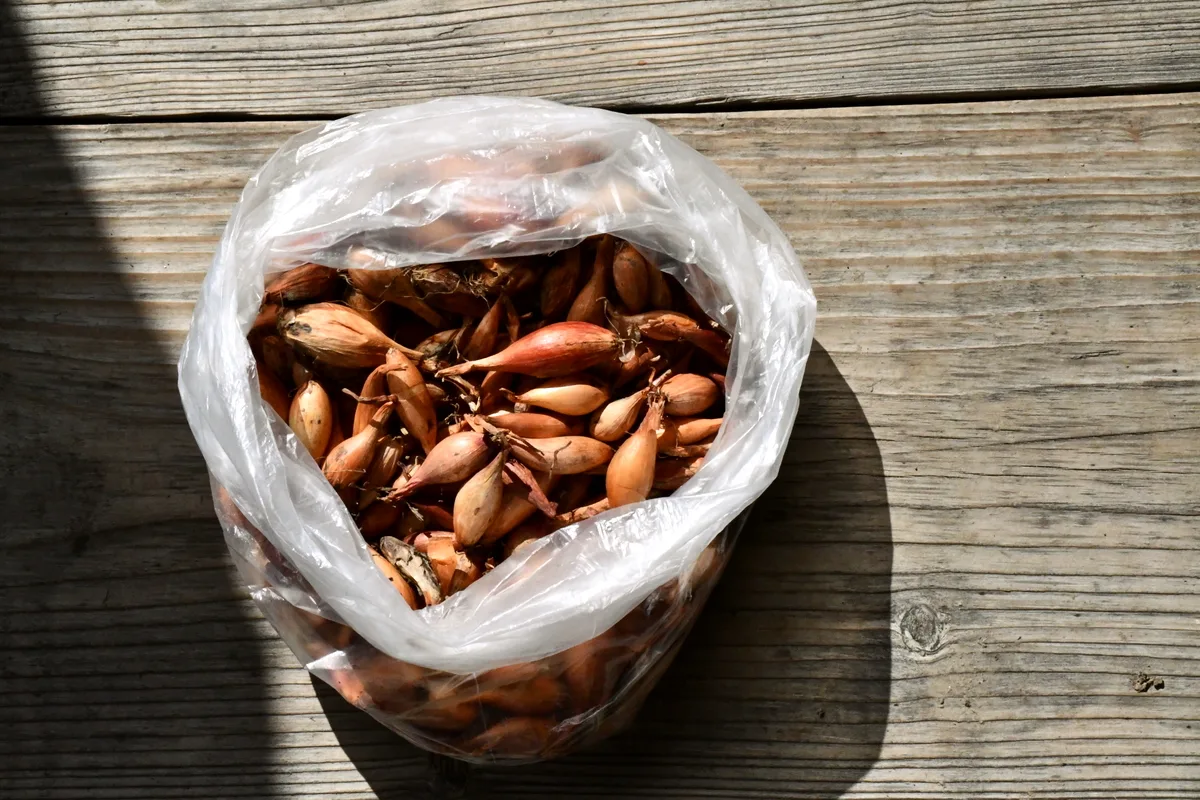
If you approach your garden as an edible experiment, go ahead and plant the onion sets or seeds that you have. If not a tunicate bulb to eat, you’ll surely be blessed with green onions. Sometimes you get to be happy with what you have.
So, what onions are the best for your garden?
For starters, onions prefer full sun, that’s a given.
From there on, you need to decide whether it’s green onions or bulbs that your belly desires. Non-bulbing green onions, for example are really simple to grow. They don’t care one way or the other about daylight hours. They are a perfect onion to grow if you are unsure about soil conditions, daylight hours, water requirements, etc.
Then there are short-day onions, long-day onions and day-neutral onions.
Let’s take a quick look at a few varieties in each set.
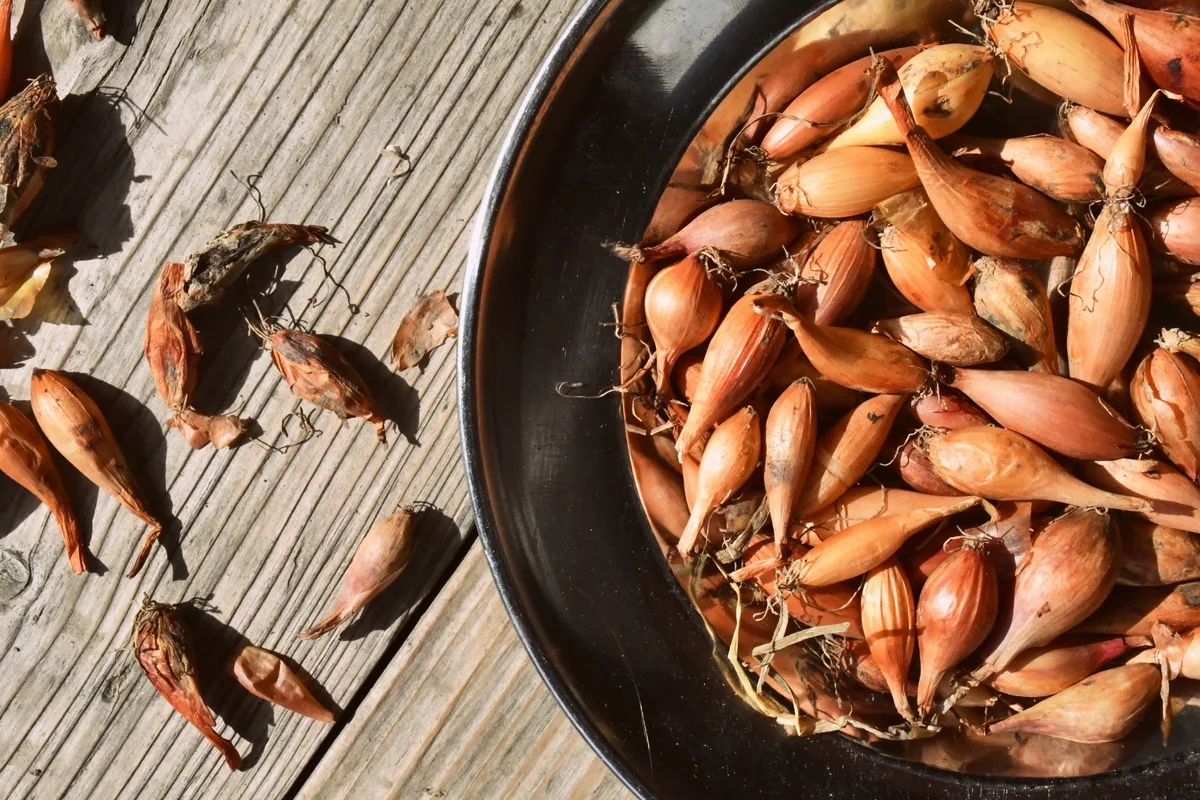
Short-Day Onions
Bulbs of short-day onions will form when daylight hours increase from 10 to 12 hours each day. White Bermuda, Southern Belle and Red Burgundy are ideal for planting in southern gardens. If grown in northern states, they may go to flower and seed too quickly. The result of any plant going to flower too fast is a stunted one. Still tasty, but smaller than average.
Long-Day Onions
Walla Walla, Red Baron, Sweet Spanish White and Rossa di Milano are onion varieties that require 14 hours or more of sunlight each day. If this much sun does not cover your garden, it’s best to try a short-day or day-neutral onion variety instead.
Day-Neutral Onions
Other onions specialize in being ordinary.
Day-neutral, or intermediate-day onions form bulbs regardless of the sun. They will also grow well just about anywhere, particularly sweet in the Midwest. They still prefer about 10 hours of sunlight, but hey, no veggie grows to full size in the dark. Try Cabernet, Red Amposta, Sierra Blanca or Monatrall.
How To Plant Onions In Fall
Mid-September through early October is a good time for fall planting of onions.
The planting date will depend on the soil conditions (hopefully not too wet), as well as the first expected frost. In general, fall planted onions need about 4-6 weeks to become established before winter hits.
Sets or Seeds?
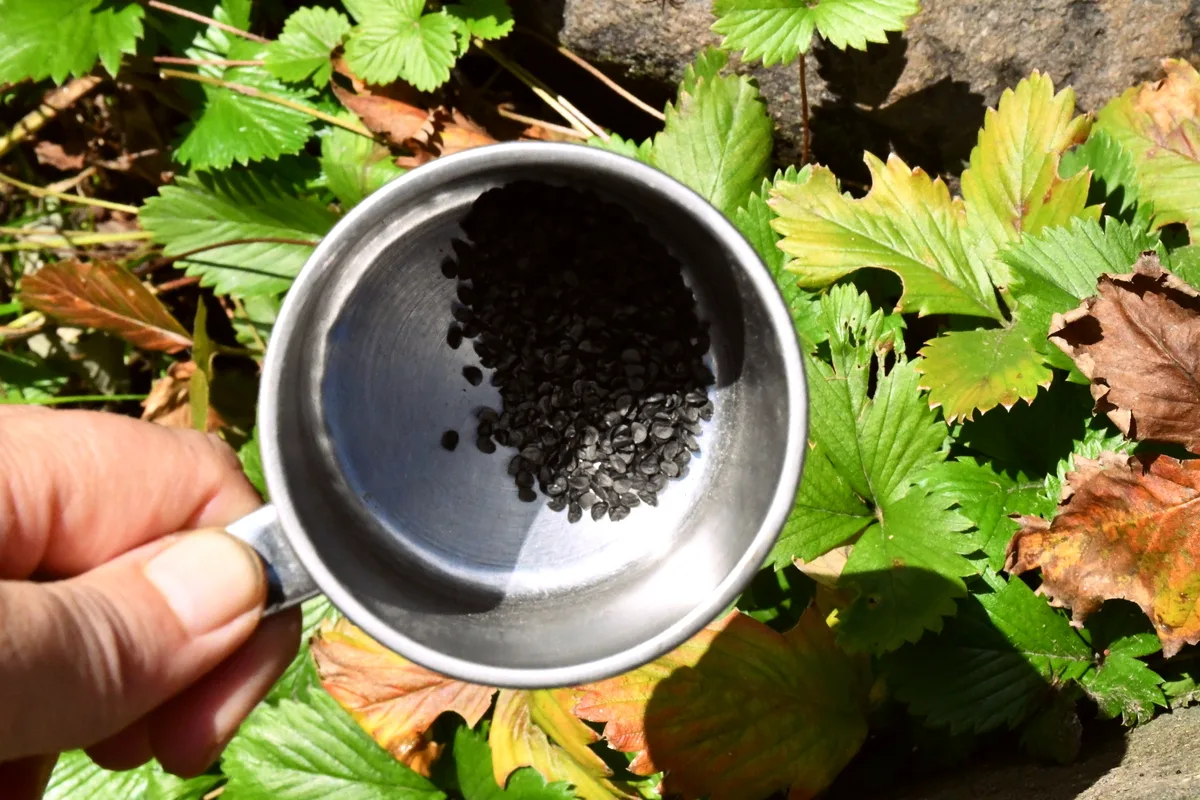
Seeds are always cheaper and perhaps more readily available, but sets have a clear advantage, no matter if you are fall or spring planting your onions.
If you choose to go with onion seeds in your garden, spacing is important, yet more difficult to achieve than when you plant sets. Another small disadvantage is that the initial growth of onion seeds is easily overtaken by weeds. If it’s seeds what you have, by all means plant them as the directions on the package say.
Sets, on the other hand, are already ready to grow into bulbs.
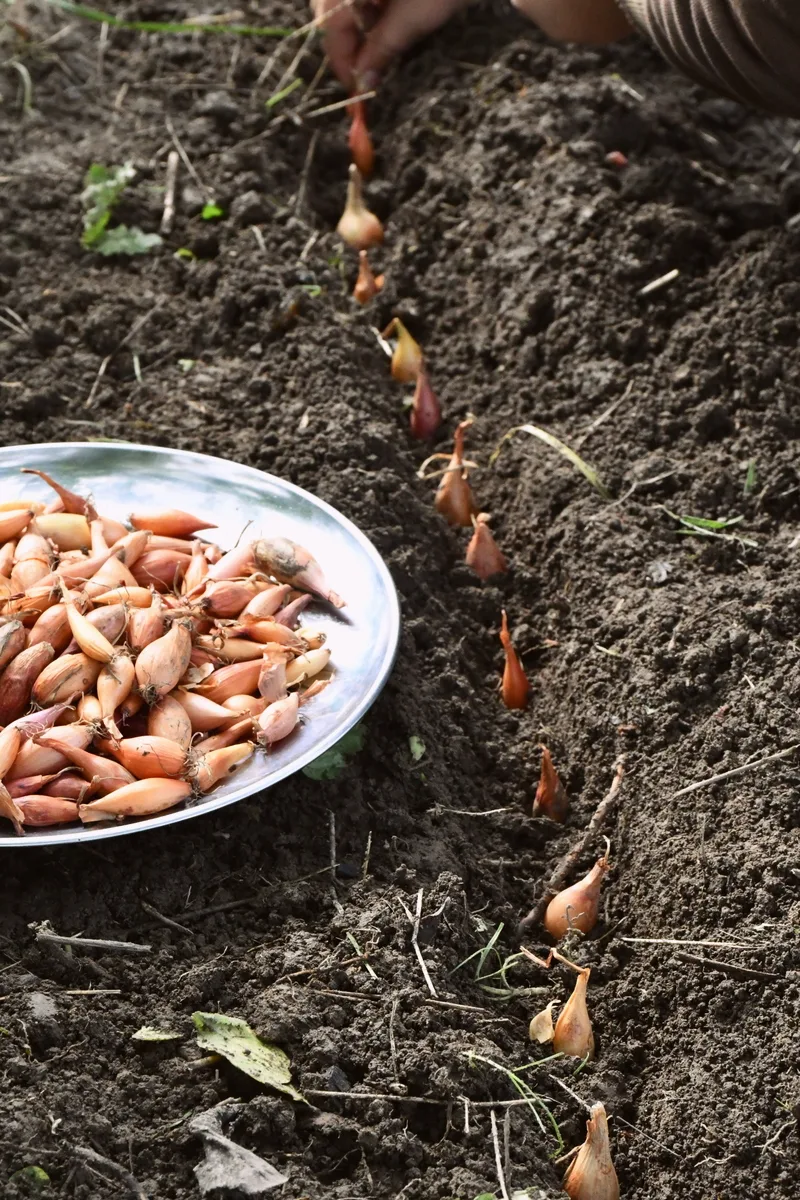
Onion sets are simply seeds which have been sprouted and grown to a certain size. You can most certainly grow your own onion sets if they are unavailable at the store. This gives you a wider range of varieties to choose from. Be aware, however, that this part of the growing process also takes time. To grow your own onion sets takes about 60-80 days.
Again, gardening has so many layers, just like an onion. If you don’t have onion sets for fall planting, seeds may still be the superior choice.
Fall Planting Onion Seeds
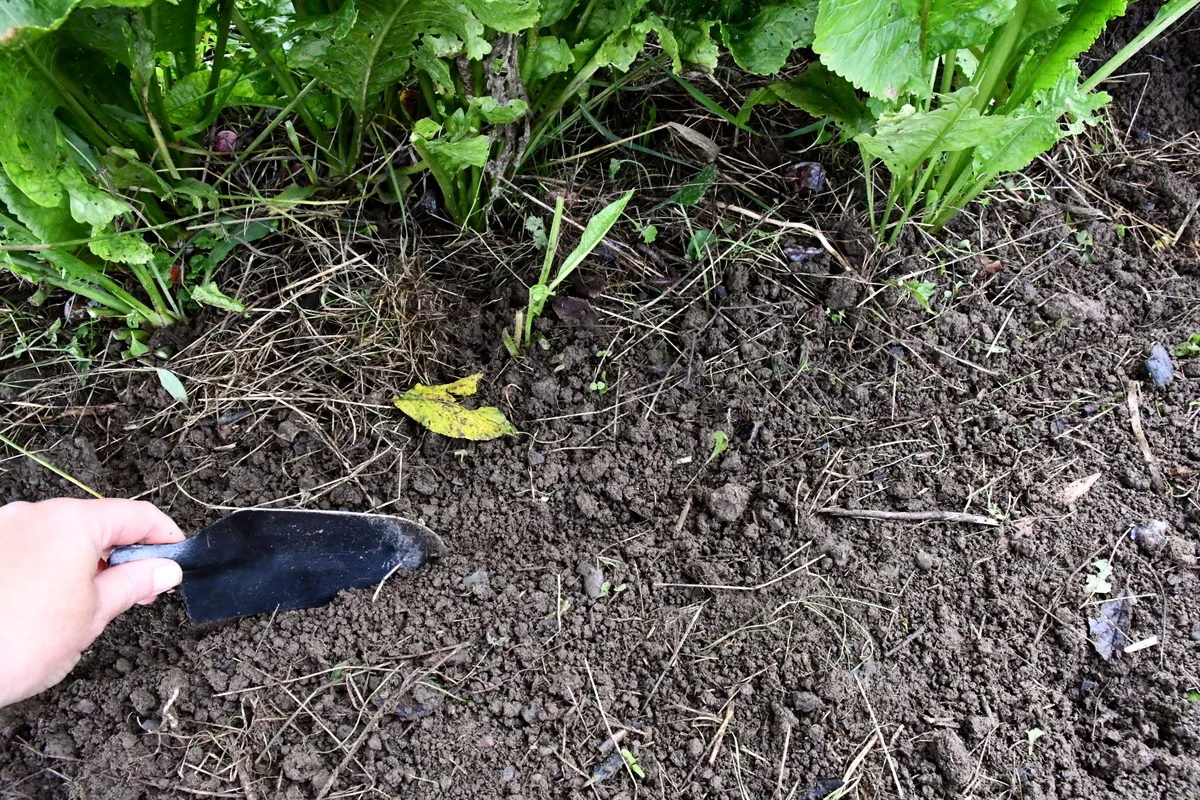
With a packet of onion seeds in hand, head out on a nice dry autumn day to your prepared garden beds and sow those tiny black seeds half an inch deep in rows that are about 8″ apart. Because the germination rate of onion seeds is quite low, sow the seeds densely.
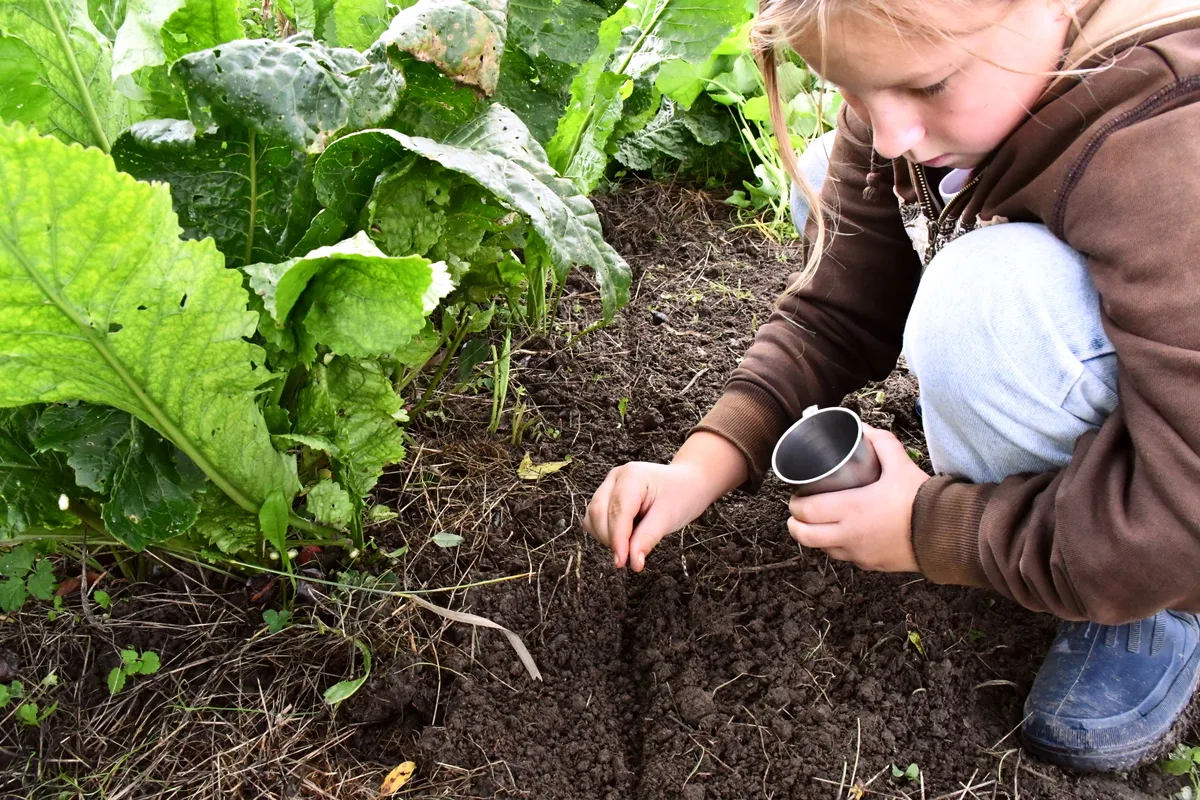
Later those seedlings will need to be thinned to about 4″ apart, but you can do this in steps, also plucking out the weakest ones first.
Onion seeds should be planted 3 to 4 weeks earlier than onion sets. That’s four to eight weeks before the first frost date. But you can also plant them at the same time, if that’s what the weather calls for.
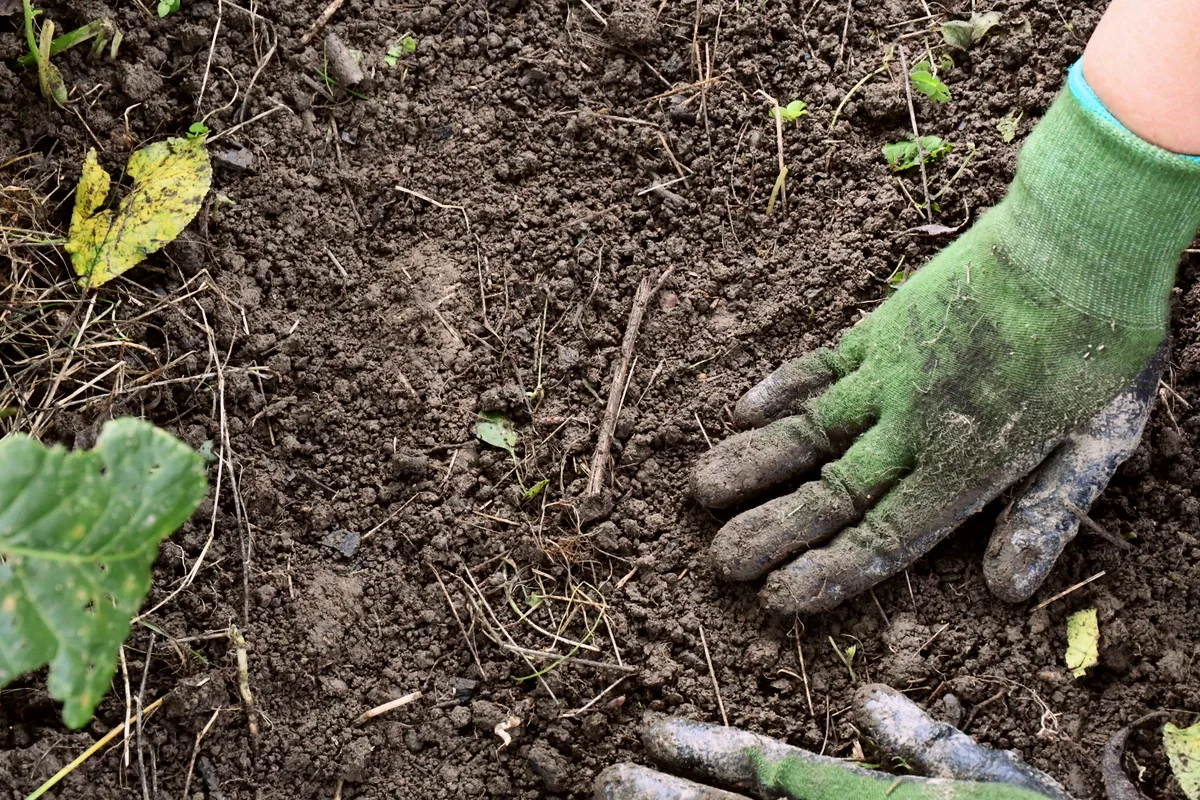
Fall Planting Onion Sets
Though onion sets establish themselves quicker in the soil, they are also more prone to bolting. This can result in underdeveloped bulbs.
When an onion bolts, it sends up a flower stalk early on in the season which attempts to make seeds. If this happens, remove it as soon as possible, unless it’s seeds you want to save. At the same time, onions that bolt will form a tough brown center in the bulb. You can easily remove this before consuming, but onions are more desirable when they are wholesome inside.
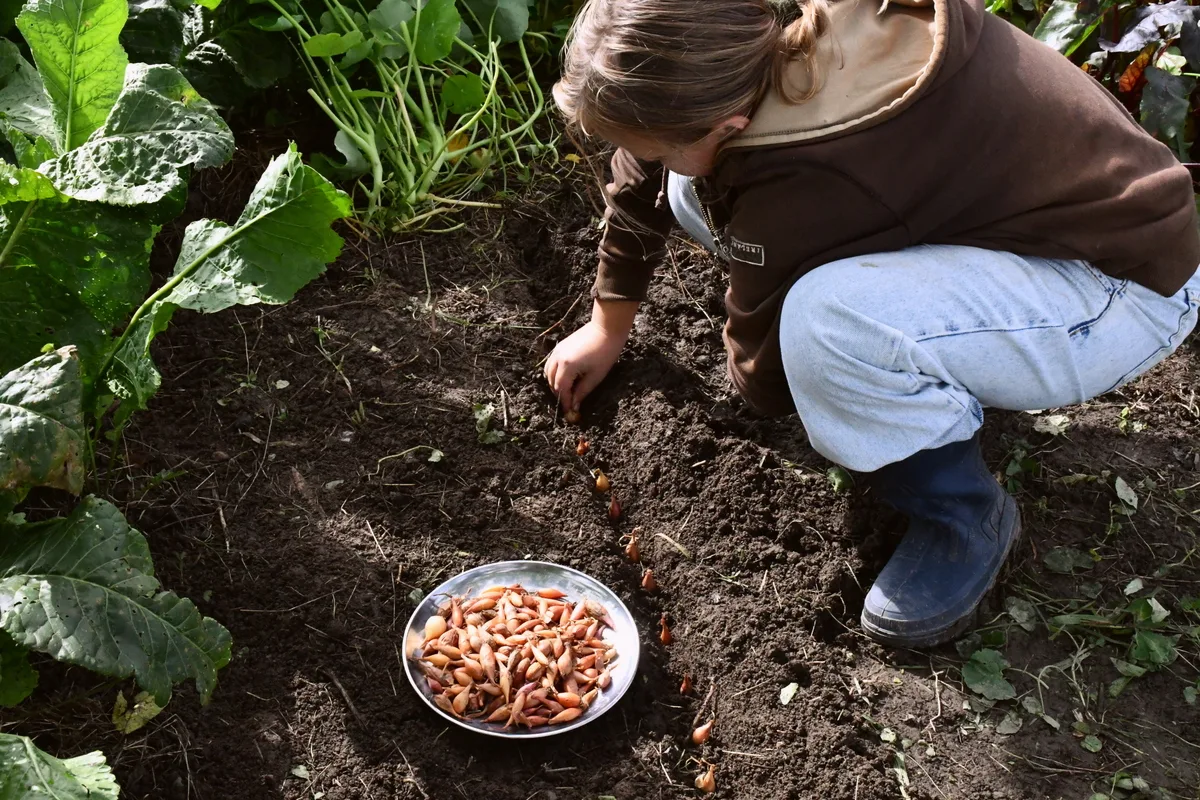
As far as planting is concerned, plant the onion sets 3/4″ deep in the ground, two to four weeks before the last frost date. The pointed tip of the bulb should just peek out of the soil. Keep the spacing to 4-6″ apart.
While it may be tempting to choose bigger sets, it’s the smallest ones you want to grow. Smaller sets are less likely to bolt and they will soon catch up in size to the larger ones.
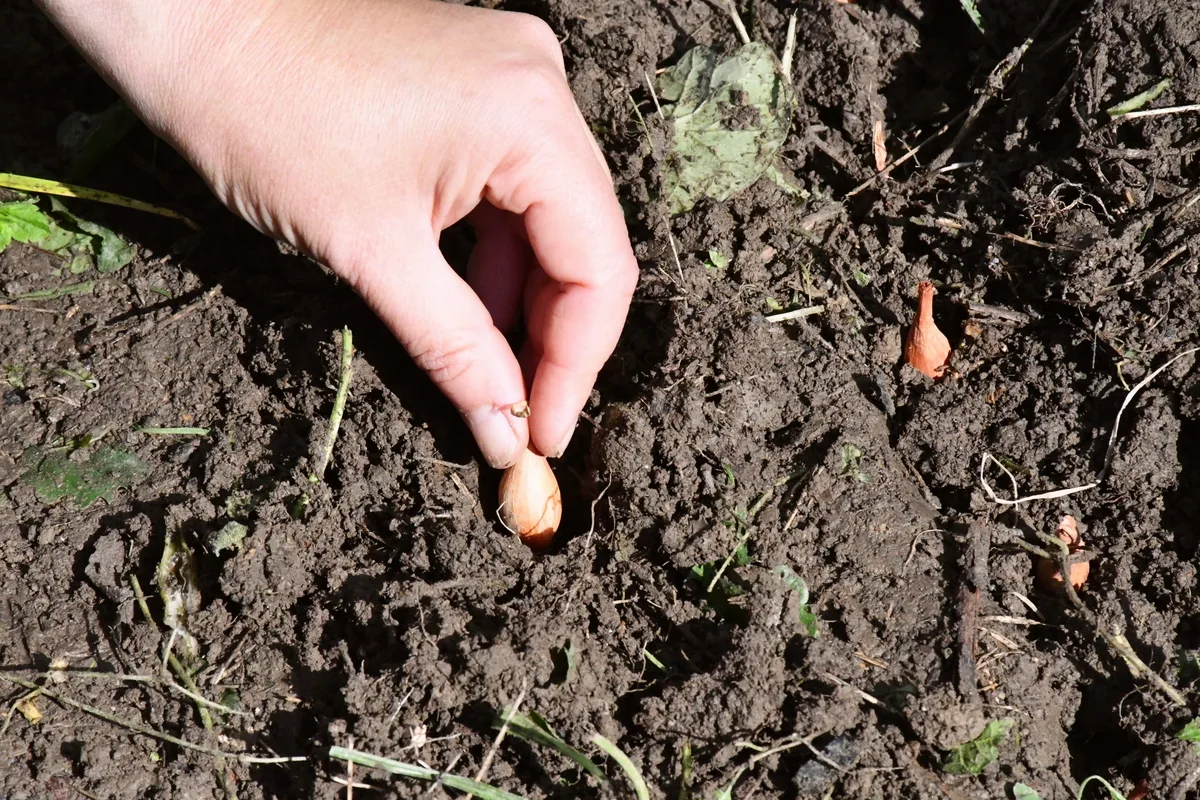
Related reading: Grow Onions – The Total Guide To Growing From Seed or Sets
Whatever you do, be sure to grow more than one variety. Red, yellow and purple onions. For both flavor and beauty.
And be sure to add compost to your soil as you plant – if your garden needs it.
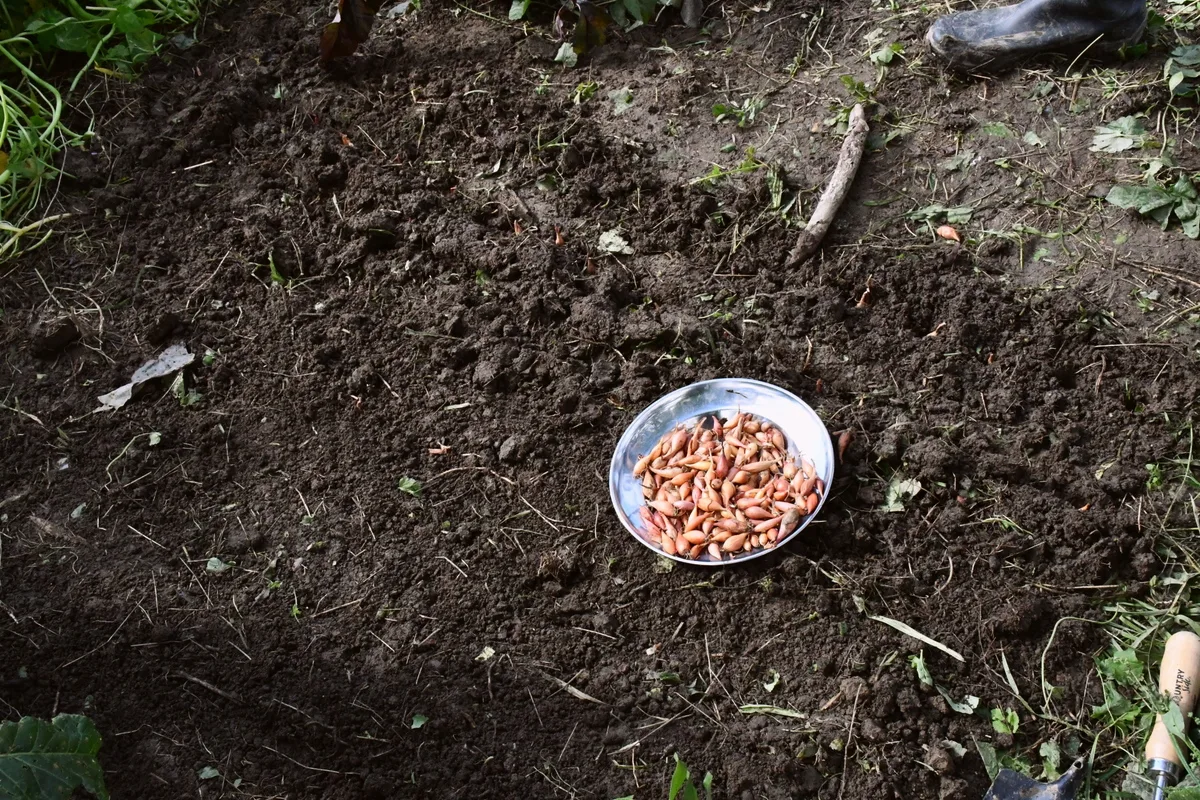
The latter combines well with a no-dig garden in terms of minimal disturbance to the soil.
As a no-dig gardener, I can’t stress enough the importance of mulch in the garden.
When fall planting onions, even if you haven’t converted your garden yet, you can still add a half inch layer of shredded leaves, leaf mold, grass clippings or straw over the newly planted onion bed. This will prevent weeds from germinating as well as keeping moisture in the soil, creating ideal growing conditions for your onion seeds or sets.
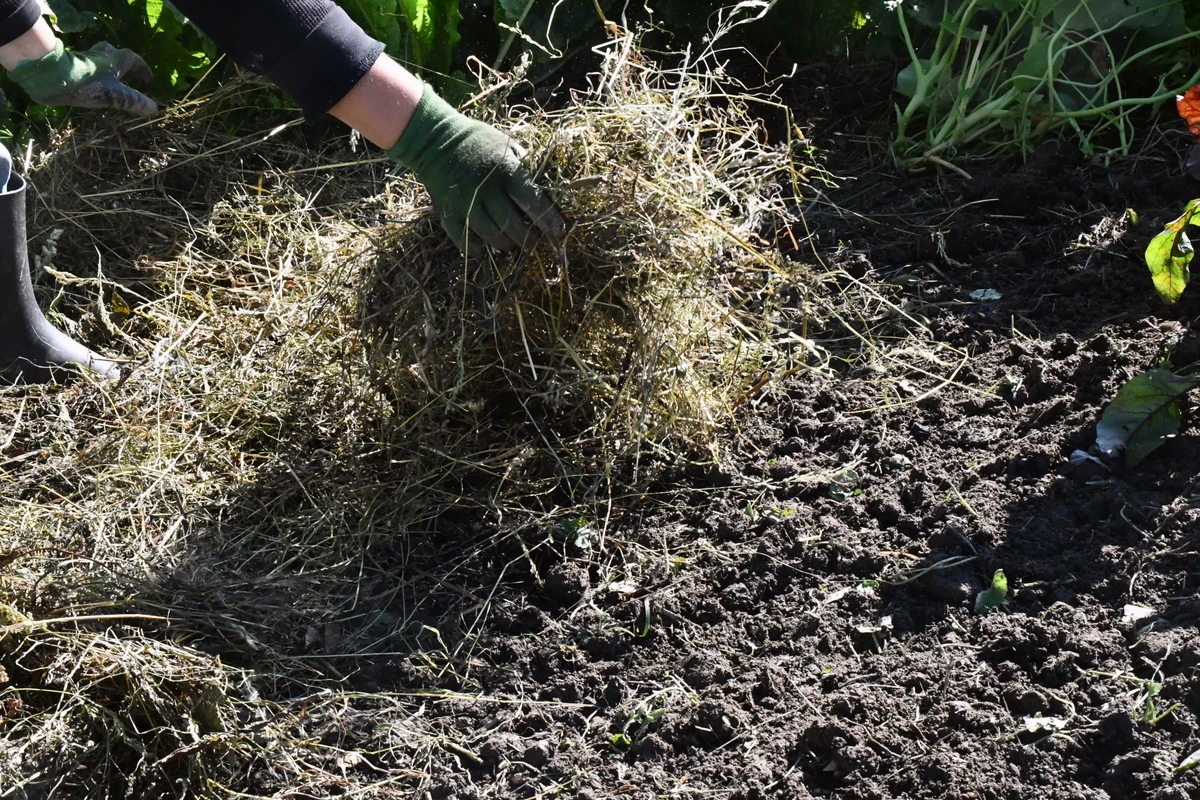
Once your onions are greening up and out of the soil, gently add another few inches of mulch. This winter blanket protects them from freezing in winter.
In case you are not yet aware, onions will benefit greatly from having companion plants around. Read Elizabeth’s article to find out exactly how to do it – 20 Onion Companion Plants (& 4 Plants To Grow Nowhere Near Your Onions).
Here are a few before and after pictures of our small patch of fall planted onions.
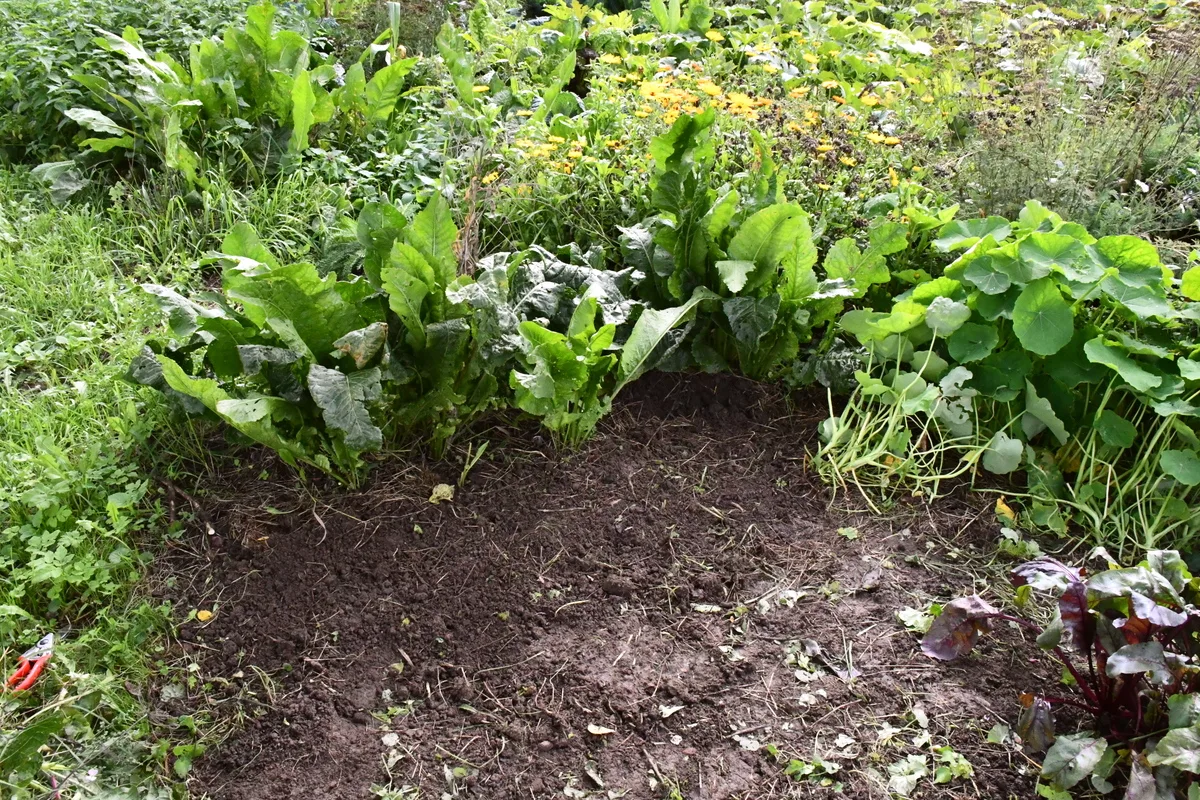
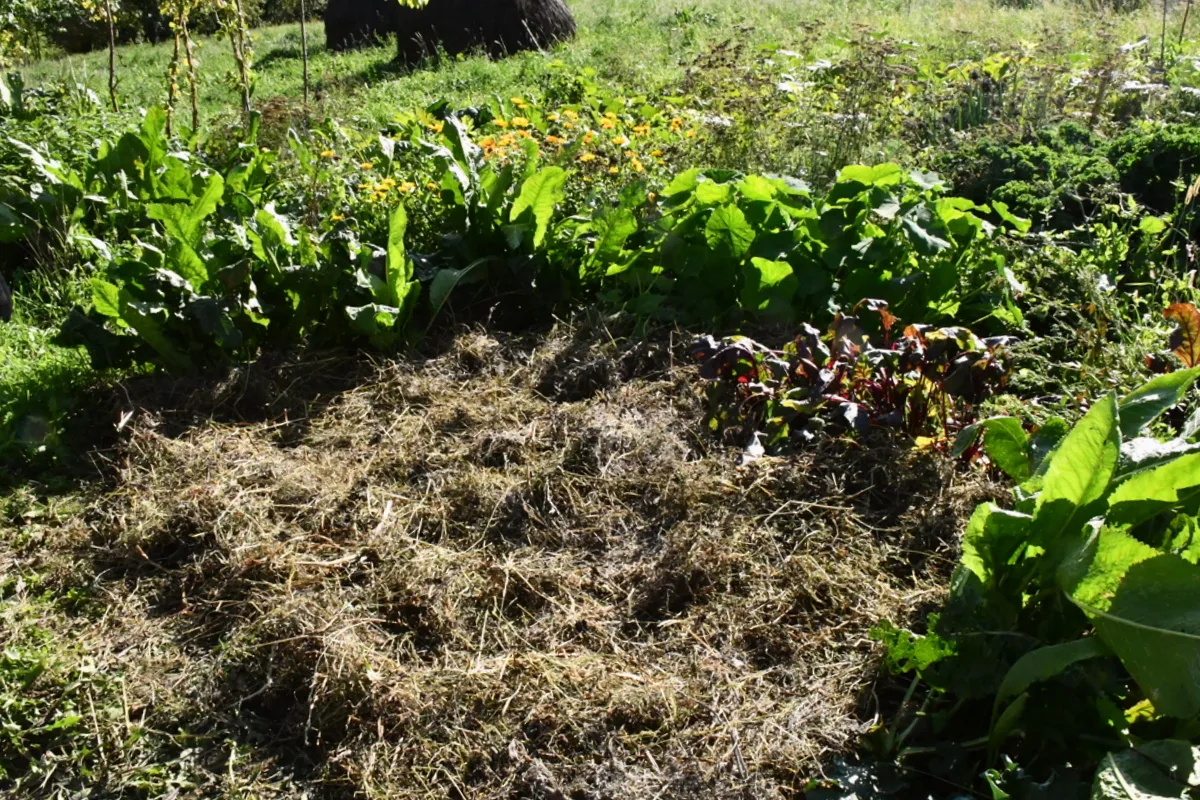
Watering Fall Planted Onions
If your soil is as moist as our mountain soil is after 3 weeks of rain every day, not watering at all may be in order after planting. You can just set it and forget about it, perhaps even till spring.
If your soil is on the drier side, it’s best to water your sets or seeds after covering them with a light layer of mulch. Fall rains are usually a sufficient source of water to get your onions growing.
Once your onions begin to hibernate (fall into dormancy), you no longer need to water them.
All that’s left to do, is wait for them to emerge in spring.
More Fall Gardening Jobs:

Get the famous Rural Sprout newsletter delivered to your inbox.
Including Sunday ramblings from our editor, Tracey, as well as “What’s Up Wednesday” our roundup of what’s in season and new article updates and alerts.


